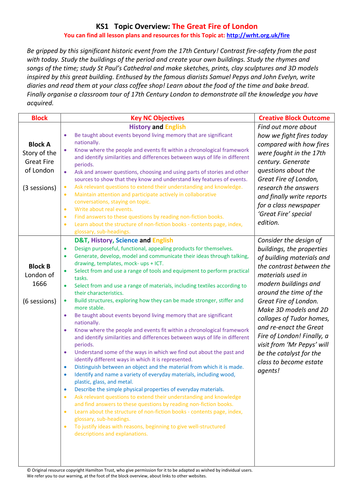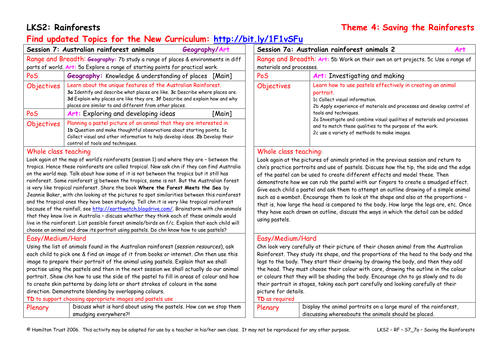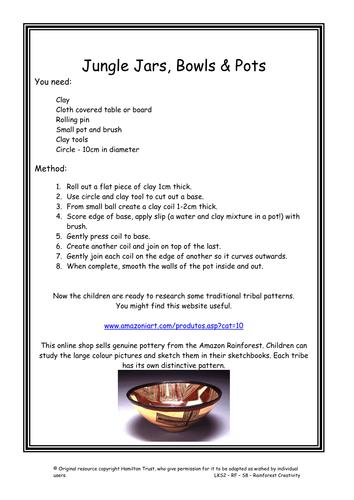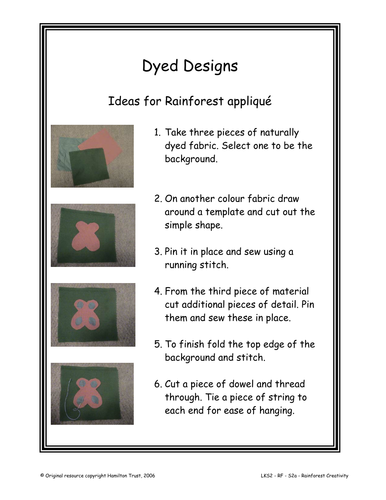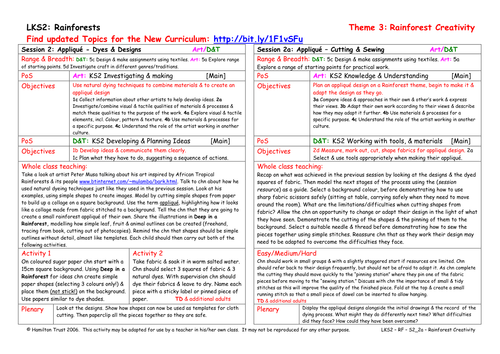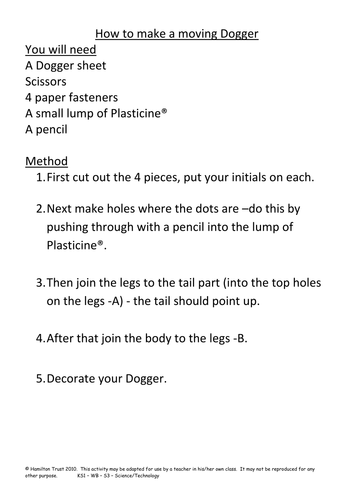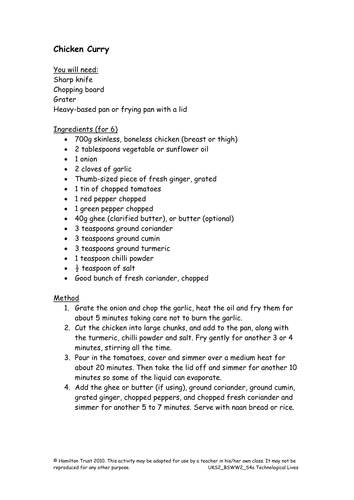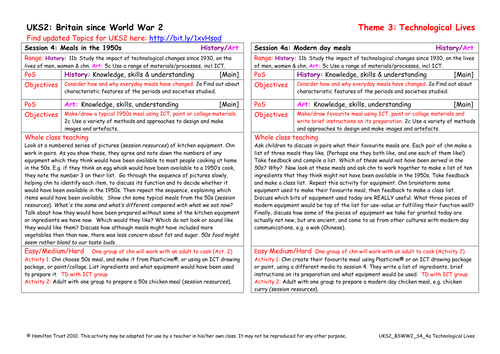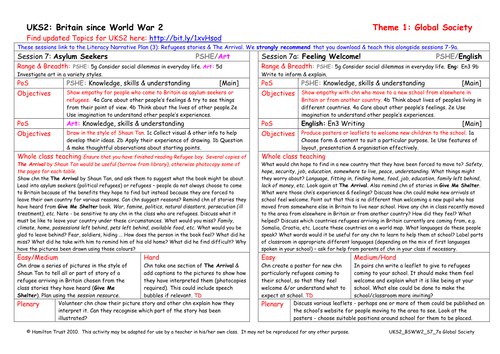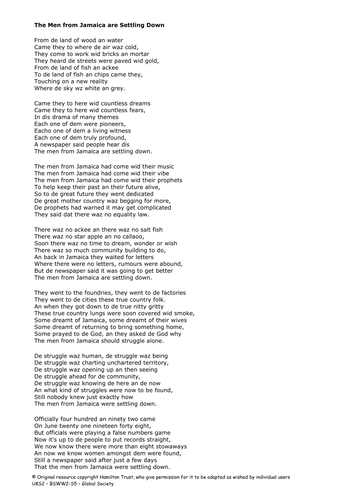
3k+Uploads
10009k+Views
11617k+Downloads
Art and design

Dinosaurs and Fossils - Dinosaur Species - Upper Key Stage 2
Become an enthusiastic, expert palaeontologist!
Learn about the species of the Mesozoic Era with very practical and engaging activities. Reconstruct a dinosaur by adding clay to a dinosaur skeleton, make a Dino-family jigsaw, take part in an animal survival game, make a 3D Mesozoic timeline showing the three main eras and populate each section with pictures of the correct dinosaur species.
- Lesson 01: Flesh it out!
Learn about how palaeoartists reconstruct dinosaurs from fossils and try it yourself!
- Lesson 02: Dino families
Learn about the main family groups of dinosaurs and make a Dino-family jigsaw.
- Lesson 03: The survival game
Investigate dinosaurs and their environments, understand how they would have competed for resources and take part in an animal survival game.
- Lesson 04: 3D Mesozoic Timeline Part 1
Find out about the three main periods of the Mesozoic Era and portray their landscapes and vegetation in a 3D model.
- Lesson 05: 3D Mesozoic Timeline Part 2
Populate your model of the Mesozoic Era with pictures of the correct dinosaur species living in each of the three periods.
Find more lesson plans and resources at www. hamilton-trust.org.uk.

Dinosaurs and Fossils - Fossil Footprints - Upper Key Stage 2
Be a palaeontologist! Excavate a fossil block and research the three main epochs of fossils. Find out how fossils are made and make your own. Tour your school sharing your knowledge with other children.
Includes:
- Topic Overview
- Block Overview
- Lesson 01: How footprints get made
Learn about how fossil footprints are made and how we investigate them. Make your own plaster cast footprints.
- Lesson 02: Dinosaur footprints
Make dinosaur feet and footprints. Learn what footprints can tell us about dinosaur behaviour and adaptations.
- Lesson 03: Optional outdoor trip
Visit an outdoor site and record animal footprints using drawing, photography and casts.
- Lesson 04: Animal footprints
Investigate animal footprints and how they give us evidence about the environment. Make a guide to animal footprints.
- Lesson 05: Human footprints
Learn how someone’s footprints can tell us a great deal about their height, gait and speed.
- Lesson 06: Natural history film
Make a film about footprint investigations, which informs others about what you have learned in this block.
Find more lesson plans and resources at www. hamilton-trust.org.uk.

The Great Fire of London - Visit 17th Century London - Key Stage 1
Be gripped by this significant historic event from the 17th Century!
Prepare tours for key London places, make souvenirs, role-play key people and draw maps, ready to transform your classroom into a recreation of 17th Century London at the time of the 1666 Great Fire. Become tour guides and teach visitors about this historic event.
Includes:
- Topic Overview
- Block Overview
- Lesson 01: The Great Fire of London Tour
Prepare a tour guide speech to inform visitors to 17th Century London about the key places that were involved in the Great Fire.
- Lesson 02: The Great Fire of London Souvenirs
Design and create Great Fire of London souvenirs, using your knowledge of the event.
- Lesson 03: Table top maps
Create informative tabletop maps of 17th Century London, using your knowledge of the event and your imagination.
- Lesson 04: Guided tours of 17th century London
Using all you have learned about the Great Fire of London, turn your classroom into a recreation of 17th Century London. Guide visitors around key places of the time, tell them about this historic event and then invite them to choose a souvenir.
Find more lesson plans and resources at www. hamilton-trust.org.uk.

The Great Fire of London - St Paul's Cathedral - Key Stage 1
Be gripped by this significant historic event from the 17th Century!
Develop your ideas about this famous cathedral using drawing, imagination and communication; use charcoal drawing and potato printing to develop artistic ideas inspired by St Paul’s before designing, making and decorating a final model Cathedral.
Includes:
- Topic Overview
- Block Overview
- Lesson 01: Journey Back in Time
Find out about St Paul’s Cathedral and then develop your own ideas in charcoal pictures.
- Lesson 02: The Dome
Research St Paul’s further using paintings and sculptures and use clay to make your own 3D artefacts.
- Lesson 03: Abstract Art
Think about the way fire looks and the way it makes people feel. Empathise with the people who lived through the Great Fire and make your own piece of abstract art using potato printing.
- Lesson 04: Designing and making a cathedral
Consolidate all your knowledge about St Paul’s cathedral by planning, making and decorating your own junk model cathedral.
Find more lesson plans and resources at www. hamilton-trust.org.uk.

Plants - Ready, Steady, Grow - Year 2
Explore the world of seeds in this unit: learn why plants disperse their seeds and the various clever ways in which they do this. Plant cress seeds and grow a bean using hydroponics – watch and record what happens to them. Using various art and design techniques, make and model your own seeds and finally enjoy the fruits of your labours!
Includes 6 session plans & resources:
01 - Spreading seeds part 1
02 - Spreading seeds part 2
03 - Hydroponics in the classroom
04 - Growing cress
05 - How has the bean grown?
06 - Eating cress
Hamilton’s science scheme provides children with a broad but comprehensive experience of primary science that systematically covers all of the National Curriculum for England objectives. Each year group is split into 6 blocks of 6 sessions, each of which can be completed within a half-term. We present them in a recommended teaching order, but you may adapt this to fit your requirements. Working scientifically, investigations and meaningful outcomes are fully incorporated in each block.
Find out more: www.hamilton-trust.org.uk/scites

Roman army and busts
This block introduces the Roman Army. What was its organisation? What were the Roman soldiers like and why did so many Britons join the Roman army? Children learn about the army and then use this knowledge to help them understand how Roman busts differed from their Greek equivalent. They create their own Roman Bust in relief from clay.
Includes:
- Topic Overview
- Block Overview
- Lesson 01: Understanding why the Roman army was so powerful
Children learn about the Roman army and train together, being given orders by a centurion. They act out a battle.
- Lesson 02: Understanding the power of the Roman army through 3D art
Children explore some of the features of the Roman Army by looking at the differences between Roman & Greek busts.
- Lesson 03: Recording different facial expressions in sketchbooks and experimenting with clay
Children start to plan and design their Roman busts, thinking about the features and expression of a soldier in the Roman Army.
- Lesson 04: Creating a fierce depiction of themselves from clay
Children re-cap all they have learned about the Roman Army. Then they create a Roman bust in relief from clay.
Find more lesson plans and resources at www. hamilton-trust.org.uk.

Australian Rainforest Animals 2
In this session children take the image of their Australian Rainforest animal printed in the previous session and use it as a starting point for a pastel picture.

Australian Rainforest Animals
Children think about the animals that they know come from Australia and then find out if they live in any of its rainforest regions. Children then look at a list of Australian rainforest animals, and print an image from the computer.

Endangered orang-utans (2)
Orang-utans are humans closest relative! Children find out more about the great ape and other great apes like chimps and gorillas, before using sketching and shading techniques to draw Orang-utans for display.

Jungle Jars, Bowls and Pots
In this session children take a look at typical examples of pots created by peoples of the Rainforests. They study the differences in pattern and decoration before creating their own pot from clay and decorating it.

Appliqué – Cutting & Sewing
In this session children complete their Appliqué by cutting and sewing the pieces of their design before proudly displaying it in the classroom. They take time to reflect on the whole dyeing and designing process and evaluate the finished product.

Appliqué - Dyes & Designs
Amazing Amazonian Appliqué! Children use the work of an artist inspired by the rainforest and Deep in a Rainforest as a starting point for some art work of their own. They create simple designs and dye their fabric nature’s way in this session.

Make a Moving Dogger
Practise cutting and joining skills by making a moving Dogger. This session links to English Plan 2 Stories with familiar settings. Learn how to cut well, make a hole in cardboard and construct moving joins using paper fasteners.

1950s Art
Children look at 1950s sculptures by Barbara Hepworth and Henry Moore and make their own similar model from clay.

Modern Day Meals
Children discuss their favourite meals, made a model/drawing of it as session 4. One group prepares a chicken curry. All taste this and vote for either the 1950s chicken meal or the modern day curry.

Meals In The 1950's
Children look at pieces of kitchen equipment and guess which were available in the 1950s. One group make a real chicken meal, whilst the others make a typical 50s dinner from Plasticine, an ICT package or paint/collage materials. All taste the 50s dinner.

Feeling Welcome
New arrivals in Britain should be made to feel welcome. Think about children moving to a new school from another part of Britain or from another country. Children create posters or write leaflets to welcome newcomers to their school.

Asylum Seekers
Explain that some people come to Britain as asylum seekers or refugees to escape from problems in their home country. Use The Arrival by Shaun Tan to empathise with people coming to Britain. Children draw part of one of short stories from Give me Shelter.

Notting Hill Carnival
Read Benjamin Zephaniah’s poem The Men from Jamaica are Settling Down. Discuss the treatment that migrants from the Caribbean received from some British people. Explain how this lead to riots and the first Notting Hill Carnival. Children design carnival costume.

Adinkra Block Printing
Selecting appropriate tools and techniques chn create potato stamps of their own Adinkra cloth symbols, ready to block print on a cloth.




